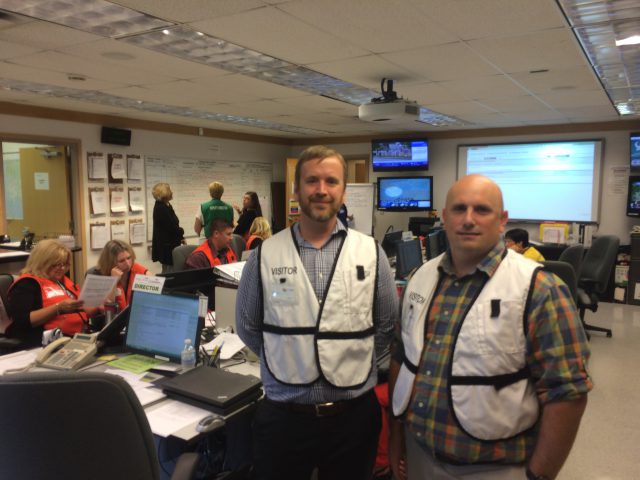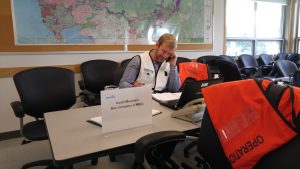CMBC attends provincially-led earthquake and tsunami response exercise
CMBC attends provincially-led earthquake and tsunami response exercise

Always be prepared. It’s not just the boy scout’s motto!
Being prepared in an event of an emergency is important at home, at work AND on transit.
CMBC recently attended a response preparedness exercise put on by the province as to how this region could handle a larger earthquake and subsequent tsunami and how transit could help.
Living in the Pacific Northwest, we’ve often read that our beautiful province is at risk for a devastating earthquake followed by a tsunami. Given this knowledge, creating a professional disaster-response plan is not only important, but necessary.
Recognized as an organization that consistently ensures the safety and security of its staff and customers, CMBC recently took part in Exercise Coastal Response (June 7-10), the first-ever provincially-led earthquake and tsunami response exercise.
Based on a magnitude 9.0 earthquake and subsequent tsunami, the event included real-time simulation activities, focusing on what steps the province and its partners would take following such a catastrophic disturbance.
While in attendance at the South West Provincial Regional Emergency Operations Centre on day three of the event, CMBC’s Stephen Shimek (Manager, Safety & Emergency Management) and Jon Arason (Emergency Management & Business Continuity Advisor) shared important information with their colleagues.
“At the start of it,” said Shimek, “they didn’t realize what services we could provide. As we talked through it, they realized how much of an asset we are in any event like this, providing a multitude of different services, including bus shelters and transportation.”
“We became one of the partners in the exercise,” said Shimek, “having a critical role as an organization that can provide support during an earthquake event.”
The real value, according to both employees, was sharing essential information. “We needed to give them updated contact info for TransLink and the bus company,” said Arason, “as well as clarify what our role during a disaster would be.”Not considered first responders, CMBC’s attendees emphasized what the organization is focused on. “We’re more than willing to help as a company,” said Arason, “we have a great track record of doing that, but we need to protect our staff, our riders, and we need to protect our assets.”
During one of the exercises, the organizers declared a provincial state of emergency, allowing them to provide further instructions to their partners, which include CMBC and TransLink. This prompted Arason, who referred to the post-disaster reality of fuel shortage and being short-staffed, to advise the province that the organization would need to manage itself first. “Once we know (we’re) safe, we’ll be rendering whatever assistance we can.”
Preparing for their own similar-type exercise this fall, Shimek and Arason agree there was an important takeaway from Exercise Coastal Response. “It reinforce(d) the fact that in order for us to support the city and the Lower Mainland, we have to be prepared ourselves, making sure that our own EOC (Emergency Operations Centre) is up and running and functional.”
Author: Kim Van Haren






